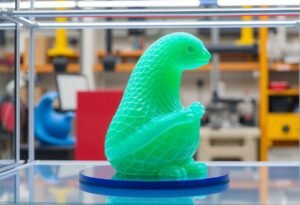As technology continues to advance, 3D printing is emerging as a transformative force in various industries. This innovative technology not only enhances creativity but also streamlines manufacturing processes. In this article, we will explore the latest trends driving the future of 3D printing and how they contribute to innovation across multiple sectors.
Advancements in Material Science
The evolution of 3D printing technology is significantly influenced by advancements in material science. Innovative materials are emerging, such as bio-based polymers, metal alloys, and ceramics, which enhance the functionality of printed parts. These materials allow for greater flexibility and performance, enabling the creation of customized solutions tailored to the specific needs of different applications. As manufacturers leverage these materials, they can produce lighter, stronger, and more efficient components, transforming industries like aerospace and healthcare.
Integration with Artificial Intelligence
The integration of artificial intelligence (AI) with 3D printing processes is a trend that is reshaping how products are designed and manufactured. AI-powered tools enable designers to optimize their models before printing, reducing material waste and production time. Machine learning algorithms analyze past printing data to predict outcomes, enhancing the efficiency of the additive manufacturing process. This synergy not only fosters innovation but also assures quality and reliability in the final products.
Personalization and Customization
One of the most compelling advantages of 3D printing is its ability to produce highly customized products. From personalized medical devices to bespoke consumer goods, this technology allows companies to meet individual customer needs effectively. Brands are now investing in on-demand production systems where items are made as needed, reducing inventory costs and waste. This trend encourages businesses to innovate continually, bringing products that resonate with consumer desires directly to the market.
Greener Manufacturing Processes
The growing emphasis on sustainability is pushing the 3D printing industry to adopt greener practices. Innovative approaches involving sustainable materials and energy-efficient processes are becoming more prevalent. Biodegradable filaments for 3D printers are gaining popularity, offering environmentally friendly alternatives to traditional plastic materials. By shifting towards sustainable manufacturing, companies aim to reduce their carbon footprint while still delivering quality products, aligning with global efforts to combat climate change.
Decentralized Production Models
Decentralization is a rising trend driven by the capabilities of 3D printing. Traditional supply chains are expanding as businesses adopt distributed manufacturing models. This approach allows production to occur closer to the end consumer, enhancing delivery speeds and minimizing transportation impacts. Facilitating local production enables businesses to respond swiftly to market changes while innovating in their offerings, catering to localized demand.
Applications in Healthcare
3D printing is making significant inroads into the healthcare industry, where it is innovating patient care. From custom prosthetics to bioprinting tissues, the possibilities are extensive. With the ability to create patient-specific implants and medical instruments, healthcare providers can enhance outcomes and reduce operation times. The ongoing research and development in this area promise even more groundbreaking advancements, solidifying 3D printing’s role as a cornerstone of healthcare innovation.
Disclaimer: The content provided in this article is for informational purposes only and should not be considered as professional advice.





















